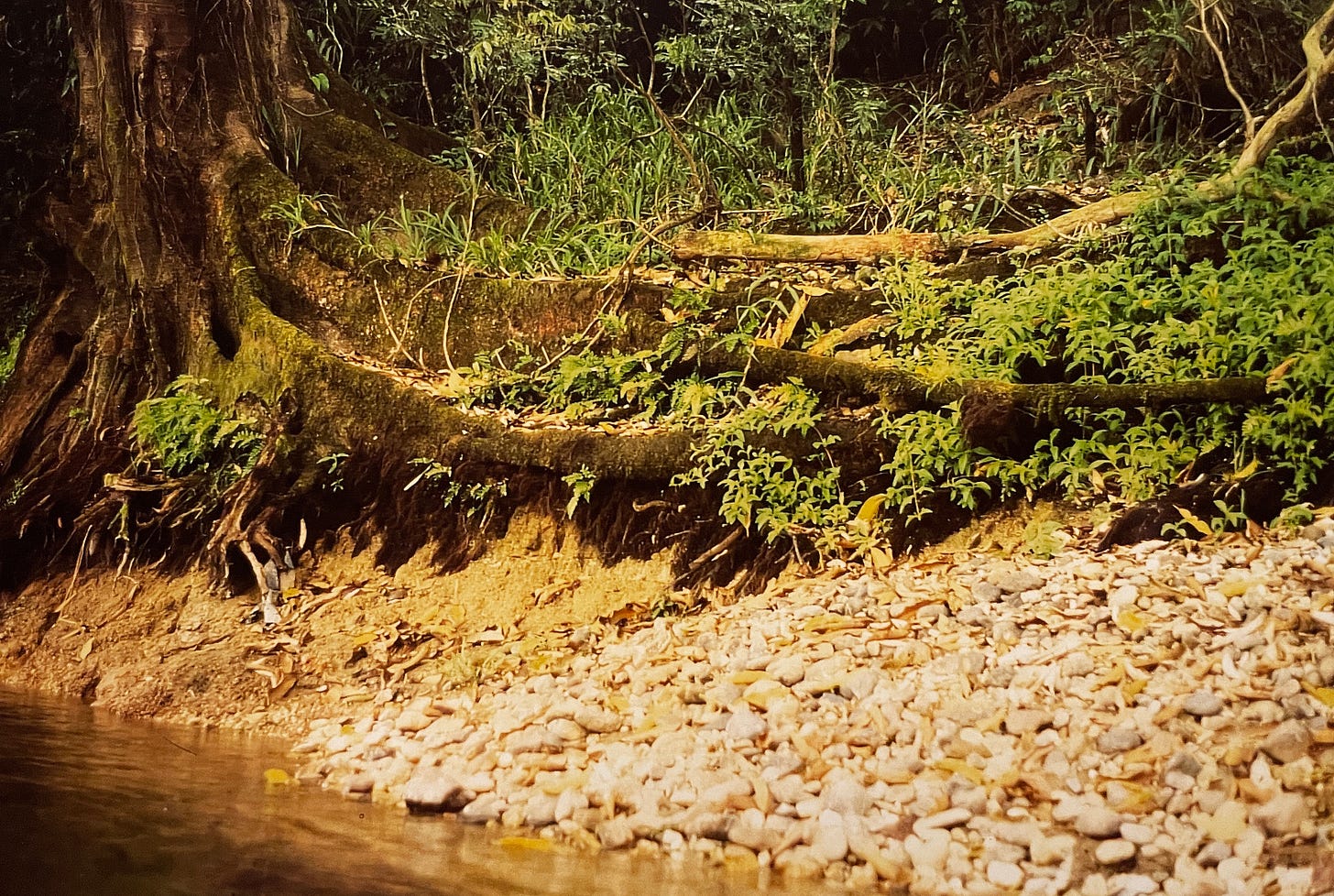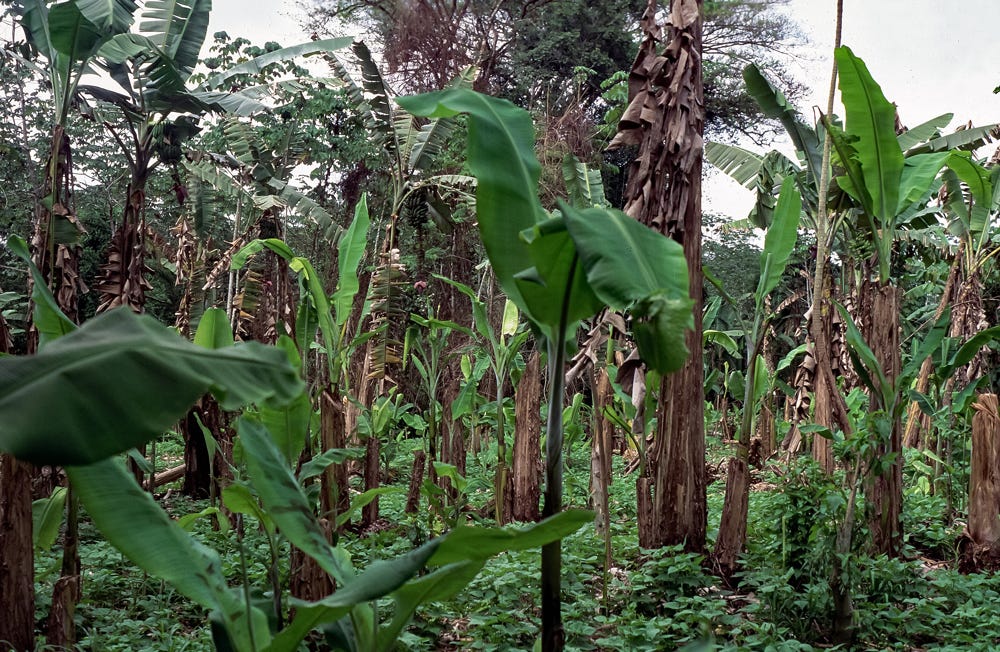"...when conservationists find unprotected land that has high biological diversity, it's because there are people living there who possess traditional ecological knowledge that protects not only biological diversity but cultural diversity.”
Mark Dowie, "Conservation Refugees; The Hundred-Year Conflict between Global Conservation and Native Peoples"
If Peace Corps was an empowering experience, then living and working with the Tawahka Indians was a humbling one. In early 1992, I spent three months in the tropical rain forest of northeastern Honduras, conducting field research on the Tawahka’s resource management techniques and culture. I wanted to understand the environmental threats this indigenous group faced from outside forces-primarily cattle ranchers and environmental refugees-and support their efforts to create a cultural and environmental protected zone. Mostly though, I grew to love and learn from these generous, welcoming people who accepted me into their homes and lives.
I mentioned in my last post that much of what I saw and experienced in Honduras as a Peace Corps Volunteer, was subsequently confirmed during my work as a graduate student. For instance, the dubiously named “slash and burn” agriculture practiced throughout Honduras was commonly blamed for the extensive deforestation throughout the country. However, when practiced effectively, “swidden agriculture” or “shifting cultivation,” a farming method that involves clearing and burning a section of forest to create a field for cultivation, then allowing the land regenerate over several years, conforms with rain forest ecology and in fact, mimics the forest’s structure. I’d seen plenty of environmental degradation in Honduras but my experience among the Tawahka taught me not to take things at face value.
Recently, my mid-20s son asked how I’d learned about the Tawahka and went about arranging my trip to go work with them. We’ve lived for so long with the ease and convenience of the internet that I’d nearly forgotten how conducting research used to be. In that not so long-ago analog world, you’d go to the campus library, peruse the card catalog, browse the academic journals, wander among the stacks, and spend hours reading and reading. In my case, I happened on an article in Cultural Survival describing the work of MOPAWI (Mosquitia Pawisa Apiska, or Agency for the Development of the Mosquitia), a non-governmental organization that supported the initial attempts to establish a protected area in the middle Rio Patuca region. From there, I narrowed my search and contacted (by snail mail, of course) anthropologist and author, Peter Herlihy, who put me in touch with Andrew Leake, then Director of MOPAWI.
Eventually all the arrangements, permissions, and money came together so that in January 1992, under MOPAWI’s sponsorship, I found myself in the Honduran capital, Tegucigalpa, buying 10 lb. bags of rice and beans to take with me to the field. My short stay in the capital soon gave way to a journey to La Mosquitia by way of bus, puddle jumper air service SAMI, morbidly referred to as “Servicio Aereo Muerte Instantaneo” (Instant Death Air Service), and finally a 6+ hour trip upriver by pipante to the Tawahka’s primary (of five) village, Krausirpe, located in the Rio Patuca rain forest.
But what ostensibly was a grad student’s thesis project instead became a rich learning experience for a naïve first-time field researcher.
An indigenous group of approximately 1,500, the Tawahka lived on Honduras’ northern Caribbean coast until the early 17th century when they were forced inland by the dominant Miskitu Indians. Over time, the Tawahka adopted new subsistence patterns (primarily hunting, fishing, and swidden agriculture) which, over the centuries, have had minimal impact on the region’s biodiversity and ecological integrity. In fact, as the Downie quote above illustrates, the Tawahka’s cultural practices promote biological diversity and rain forest ecology. That ecological and cultural story was what I sought to understand.

My experience among the Tawahka was akin to a rookie trying to make a good impression on a sportsball field while still fumbling with the mechanics of the game. In this case, I, as a field research first-timer, had some firm plans and activities in mind (semi-structured interviews, lots of picture-taking, participant observation), but never had anything but classroom training on how to conduct research with actual people. Similar to my Peace Corps experience, I felt I was making it up as I went along. But that flexibility (and challenge) wasn’t necessarily a bad thing-I visited all five Tawahka villages along the Rio Patuca, conducted a census, participated in daily home and agricultural life, met with Tawahka leaders, and did my best to integrate myself into the community for the three months I lived there. It all added up to what was already evident; that the Tawahka knew, understood, and honored the traditions of their natural resource management practices.

In the end, two experiences taught me more about myself and my preconceptions about the Tawahka and indigenous people in general. The first occurred when a local politician visited Krausirpe making promises and seeking votes, prompting cynical comments from my companions that, “they only show up every 4 years and then disappear.” That was my first clue that the Tawahka weren’t naïve but rather, savvy political observers.
By far, the most instructive experience for me was when the Jehovah’s Witnesses showed up in Krausirpe one day to pass out donated clothing and leaflets extolling their religious virtues. As a reactionary young man who felt that religious figures should direct their efforts toward saving actual lives rather than souls, I was indignant, offended, angry! Oh my, the self-righteousness! I remember spending that morning observing the kids coming out of school with new T-shirts and shoes, along with comic books depicting Jesus spreading the word. Finally, I asked my friend and informant, Anastacio, what he thought about all of it. His response, though not his intention, put me in my place. “Oh, they’re nice and the comic books give us something to read, and if we run out of toilet paper, we have a back-up.”
At that moment, I understood that the Tawahka weren’t helpless innocents but a complex people with a clear understanding of the world’s realities, their place in it, and a subtle but wicked sense of humor.
Over the years, though the Tawahka have remained somewhat geographically isolated, they still struggle with the challenge many indigenous peoples face: how to maintain the values and cultural practices that make them unique while resisting outside threats to the tropical rain forest ecology and their natural resource management practices. The Tawahka Asangni Biosphere Reserve (TABR), formally established in 1999, was meant to curtail outside impacts on the Tawahka. Unfortunately, pressure from wealthy cattle ranchers, environmental refugees, and drug runners continues to threaten the Tawahka’s culture and livelihood, as well as the stunning natural beauty of the middle Rio Patuca region.
The story has taken a tragic turn, though. Recent news reveals that the Tawahka’s continued survival, and the entire Mosquitia rain forest, face continuing threats. The deleterious effects of “Patuca III,” the huge, 104 MW dam built on the upper Rio Patuca in the neighboring Honduran departamento (state) of Olancho have already been felt. “[Teacher Gil Cardona] pointed to the sluggish Patuca, where motorboats skidded on rocks as they navigated narrow passages in the shallows. Cardona blamed a hydroelectric dam built upriver and the deforestation for the shriveling waterway.”
Damming the Patuca may have sealed the region’s fate. Choking off enriching sediment starves downstream agricultural systems and allows salt-water encroachment on the river’s Caribbean delta. For the Tawahka, the river’s altered flow means abandoning long practiced agricultural and resource management techniques. Rommel Sánchez, president of the Tawahka Indigenous Federation of Honduras (FITH) says that though he estimates the Tawahka’s population has grown to 3,500 today, many have left for the cities, and even resorted to the previously unimaginable – migrating to the United States.
All may not be lost, though. A March 2010 report states, “The goal of this environmental flow recommendation was to define the suite of flow conditions that must be maintained to preserve important flow-dependent ecological and social characteristics of the Patuca River.” Studies of the Patuca’s seasonal flow indicated that dam releases would allow the river to flow “normally” and reduce negative downstream environmental impacts. Though the report notes that Traditional ecological knowledge (TEK) helped to inform the findings, one wonders if implementation of the report’s recommendations is actually occurring.
The story is depressingly familiar; a dominant culture overrunning a smaller, less powerful one. The Tawahka have fought for centuries to preserve their cultural and environmental heritage. Over 400 years ago, they successfully fled the Miskitu and adapted their resource management practices to a new environment. Now, however, political, economic, environmental, and cultural changes are occurring too rapidly for the Tawahka to absorb and/or adapt to…and they have no place to flee.
In my first essay on international development, I wrote about its subversive nature. Those two incidents I described above introduced me to a novel concept; the notion that communities are (or should be) in control of their own development, their own progress. I would later learn from the book, “They Know How,” that innovative (and subversive) concept was widely accepted in certain development circles and that a small government agency, the Inter-American Foundation (IAF), had been putting the idea into practice for over two decades.
More later…
(All photographs @Mark Caicedo/PuraVida Photography except where noted)






















I really, really love the way your photos tell a story alongside the written one. They enrich the refund experience. Beautifully done